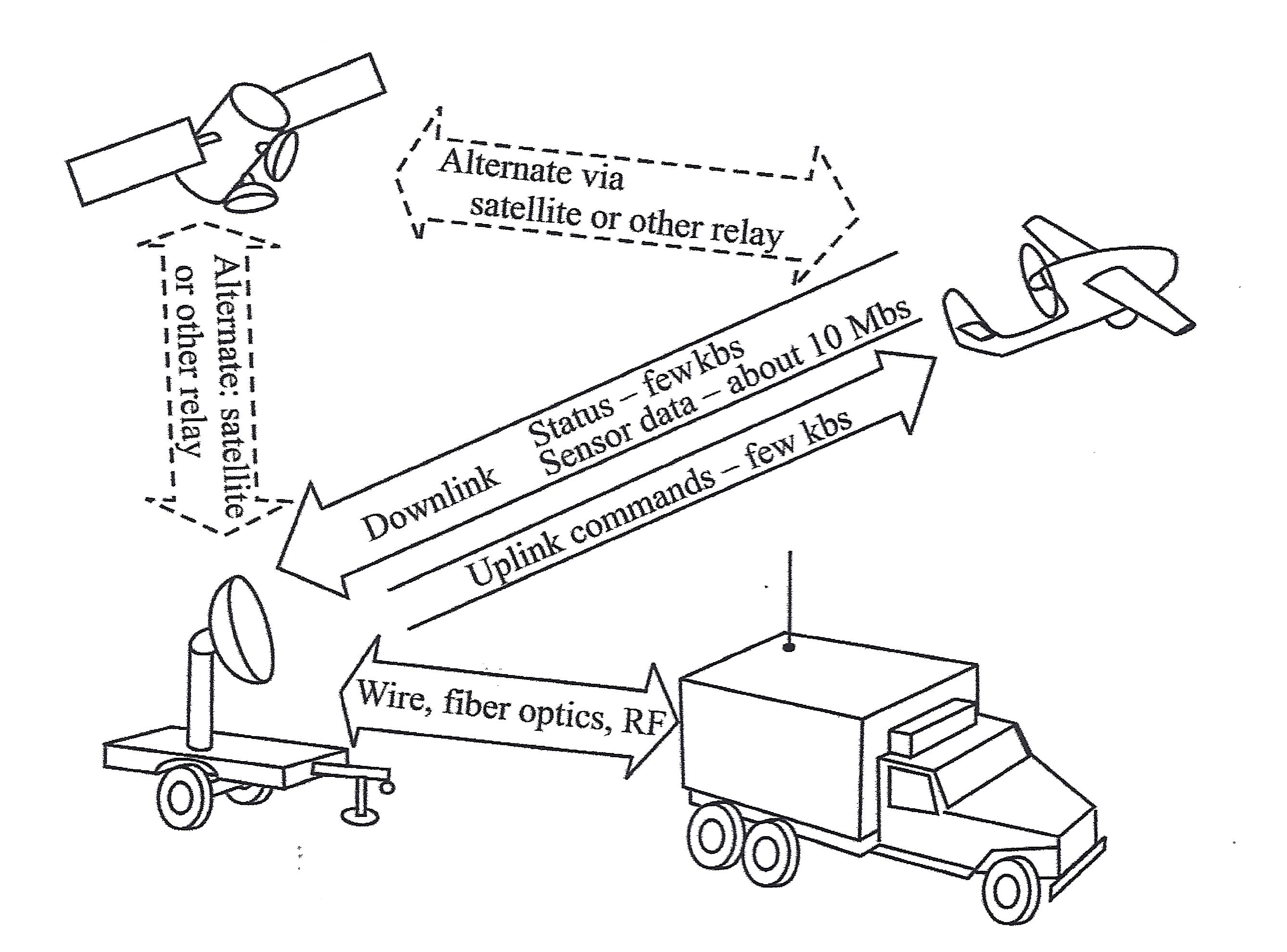The term data link is used to describe how commands are communicated back and forth between the ground control system and the autopilot. The data link is a key subsystem for any UAS, as it provides a two-way communication to ensure that missions are executed safely and according to plan. A good data link is illustrated in Figure 2.2:
- The uplink that is illustrated in Figure 2.2, below, operates with a bandwidth of a few kHz and secures sending data to control the UAS flight path and to communicate with the payload;
- The downlink from the UAS to the ground control station uses a low data rate to acknowledge commands and to send status information about the air vehicle, and uses a high data rate (1-10 Mbs) for sending payload sensor data, such as video, down to the ground control station. The downlink signal can also be used to locate and measure the position of the air vehicle (range and azimuth) in reference to the ground antenna and to improve the overall accuracy of target locations measured by the payload sensors.

This schematic drawing illustrates the workings of a data link system. The system is composed of four elements:
- the Ground Antenna (which looks like a truck with an antenna extended from the back),
- the Ground Control Station (a satellite dish mounted on an unattached, flat-bed truck trailer),
- the UAS (airborne above the Ground System, which is the Ground Antenna and Ground Control Station together) and
- a Satellite, floating in space.
Between the Ground Antenna and the Ground Control Station is a two-way arrow containing the words "Wire, fiber optics, RF"
An arrow points from the Ground Control Station to the UAS. It contains the words "Uplink commands - few kbs"
An arrow points from the UAS to the Ground Control Station. It contains the words "Status - few kbs; Sensor data - about 10Mbs."
A two-directional arrow between the UAS and the Satellite contains the words "Alternate via satellite or other relay."
A two-directional arrow between the Ground Control Station and the Satellite contains the words "Alternate: satellite or other relay."
There are two different modes for operating a UAS. Those are:
- The radio frequency line of sight (LOS) operation, where a direct communication link is established between the UAS and the ground station, and
- The beyond line of sight (BLOS) operation. This mode of operation is used when the UAS is controlled from far distances beyond the LOS capability. Communications satellites are usually used in this mode of communication.
More details on the two operating modes will be covered in lesson 4.
To Read
- Section 3.4 of chapter 3 of textbook 1 "Introduction to the Unmanned Aircraft Systems"
- Chapter 13 of textbook 2 "Introduction to UAV Systems (Aerospace Series)"